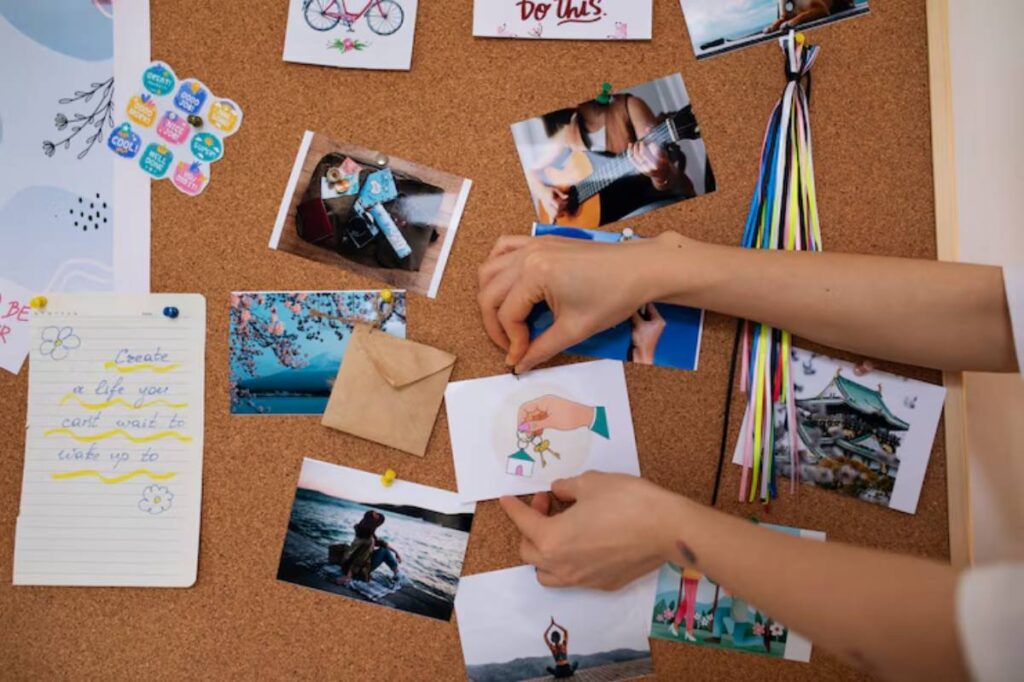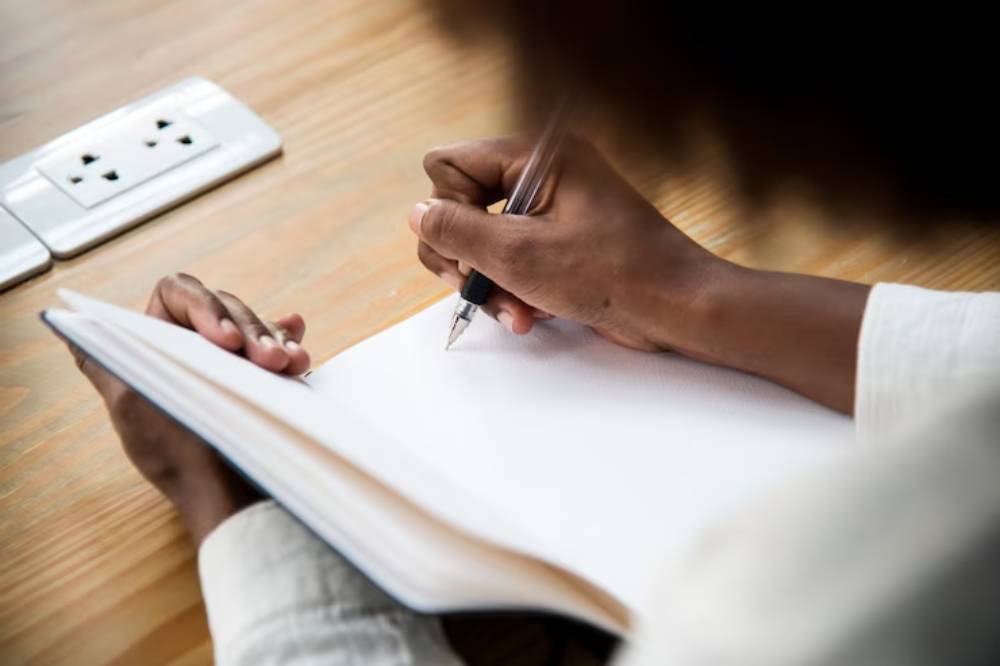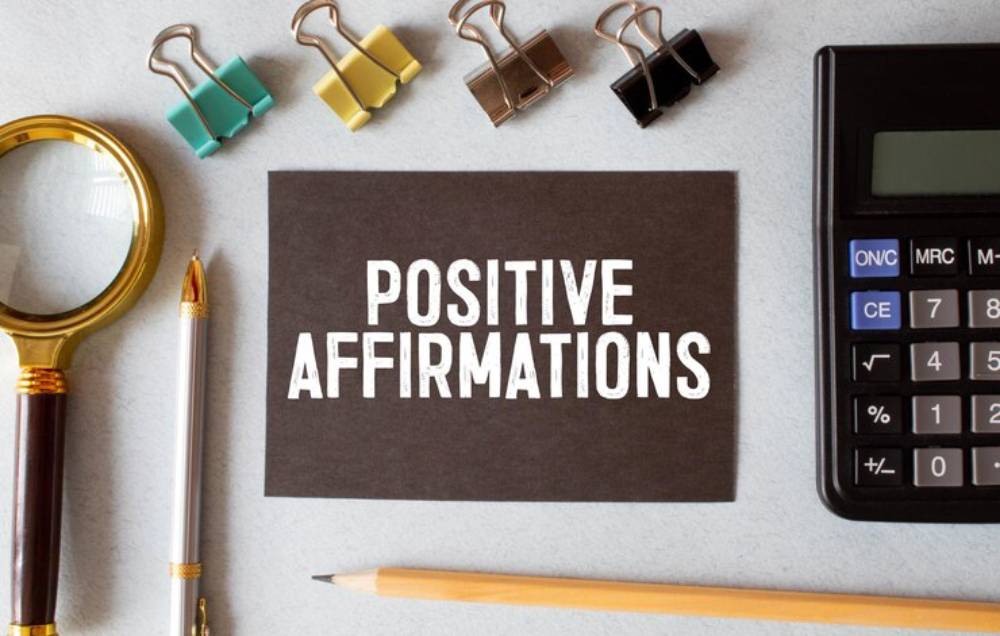The Personal Development Blog

Creating a Centrepiece Image for Your Vision Board
There’s a moment—quiet and powerful—that happens when staring at the centre of a vision board. That one image in the middle? It pulls everything together. It grounds the chaos. It whispers, “This is what it’s all about.”
That, right there, is the power of a centrepiece visualisation.
Too often, people fill their boards with scattered hopes—each one meaningful, sure—but without a compass to tie them together. That’s where the focal point imagery comes in. A single image (or sometimes phrase) that doesn’t just sit at the centre of your board, but lives at the centre of your intention.
Let’s unpack why this element is so important, how to choose one that resonates, and how to use it to align your board—and your life.
Why the Centrepiece Image Matters
Think of a vision board like a story. The centrepiece image? That’s your book’s cover. It sets the tone, sparks curiosity, and defines what’s inside.
A strong focal point image does three things:
- Anchors your attention – In a sea of visuals, your eye is always drawn to the centre. Use that space wisely.
- Reflects your core goal or identity – Whether it’s freedom, abundance, love, or transformation, it should speak to your biggest “why.”
- Creates visual cohesion – It helps tie together all the supporting goals around it. Without a focal point, a board can feel like an unedited Pinterest page.
So, the centre isn’t just real estate. It’s real meaning.
The Psychology of Centre Focus
Studies in visual processing show that people look at the centre of a composition first—then move outward in a circular or Z-pattern. This means your centre image will naturally become the most viewed and most remembered.
That’s huge. Because when it comes to goal alignment visuals, repetition is everything. The more you see, the more your brain encodes.
In short? Your centrepiece image becomes a mental rehearsal tool. The more aligned and emotionally charged it is, the more effectively it reinforces your vision.
What Makes a Strong Centrepiece Visualisation?
Not all images are created equal. Some are pretty. Others are powerful.
Here’s what sets apart the truly magnetic ones:
1. Emotionally Evocative
The image should stir something inside—joy, fire, hope, hunger. If it feels “meh,” it’s not it.
2. Symbolically Rich
The best centrepieces speak in metaphor. A key, a door, a sunrise, a bird in flight—whatever aligns with your intention.
3. Future-Oriented
It should represent not who you are now, but who you’re becoming.
4. Simple, Not Crowded
Complex scenes are harder for the brain to latch onto. Aim for visual clarity.
Types of Centrepiece Images (With Examples)
A Person Living Your Dream
- Example: A woman working on a laptop near the ocean, symbolising location freedom.
- Why it works: Shows lifestyle, not just objects.
A Symbol
- Example: A lotus flower for spiritual growth or a mountain peak for achievement.
- Why it works: Universally resonant and deeply personal.
A Powerful Word or Phrase
- Example: “Aligned,” “Fearless,” or “The Year I Became Her.”
- Why it works: Acts as both affirmation and visual cue.
A Metaphor
- Example: A compass, a lighthouse, or a bridge.
- Why it works: Ties multiple goals together through one idea.
A Scene of “You Made It”
- Example: A champagne toast, a home interior, or a stage performance.
- Why it works: Helps you imagine success viscerally.
Where the Centrepiece Fits in Your Layout
Naturally, this image goes in the centre—but how much space it takes up is up to you.
Here are a few layout ideas:
1. Bullseye Style
- Centre = the image
- Surrounding rings = supporting goals
- Creates a feeling of “everything points here.”
2. Sunburst Layout
- Centre = the image
- Rays = categories of goals branching outward
- Great for connecting multiple areas (career, love, health).
3. Anchor + Orbit
- Centre = anchor image
- Top, bottom, and sides = mini goals orbiting around it
- Offers symmetry and clean visual balance.
Learn when and how to refresh your board in How Often Should You Update a Vision Board?.
Choose Your Centrepiece Image
Here’s a process that works:
Step 1: Reflect on Your Core Intention
Ask: What is this season of life about for me? What’s the theme behind all my goals?
It might be freedom, love, healing, growth, expansion, success, or peace.
Step 2: Search for Matching Imagery
Use Pinterest, free stock image sites (like Pexels or Unsplash), or magazines. Look for something that makes you pause—not because it’s trendy, but because it feels like truth.
Step 3: Test It Visually
Place it at the centre of a blank board. Then slowly add a few supporting visuals. Does it still hold the energy? Does it elevate the others?
If yes, it’s a winner.
Digital vs Physical: Does the Centre Matter?
Absolutely.
- On digital boards, the centre image should be sized larger or placed first, so it grabs attention even on a screen.
- On physical boards, elevate it with space, frames, or bold borders. You could even raise it with a thicker material.
How to Keep the Centrepiece Working Long-Term
Creating a board is one thing. Keeping it alive is another.
Here’s how to make sure your centrepiece visualisation continues to inspire:
Journal With It

Every week, write a few sentences about what the image reminds you of, or how your actions aligned with it.
Pair It With Affirmations

If your centrepiece is about confidence, pair it with affirmations like “I am becoming the version of me I once dreamed about.”
Revisit and Reflect
Every month, ask: Does this image still resonate? If not, swap it. Vision evolves—and so should your board.
When to Change the Centrepiece
Sometimes your dreams shift. That’s natural.
Consider changing your focal point imagery if:
- You’ve achieved the goal it represented
- It no longer excites you
- Your direction in life has meaningfully shifted
A new season often calls for a new centre. Updating doesn’t mean failure—it means growth.
The Centre Holds the Story
Your centrepiece is the soul of your vision board. It’s not just a visual—it’s an invitation. A reminder. A magnet pulling you toward who you already are, beneath all the fear and forgetfulness.
So choose with intention. Choose with emotion. Choose with vision.
Let that image in the centre be the place your eyes go when your energy dips, when you forget your why, or when you’re celebrating how far you’ve come.
Want help choosing the right layout for your centrepiece? Start with Best Vision Board Layouts for Maximum Clarity to explore guided structures that balance inspiration with intention.









